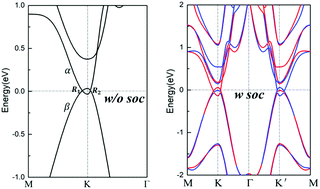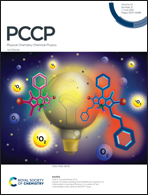A novel spin-valley-coupled nodal-ring semimetal in single-layer Ta2C3
Abstract
Nodal-ring semimetals with band crossing are the new type of quantum materials that have attracted considerable interest from scholars for research. In general, the spin–orbit coupling (SOC) effect opens a band gap at the Dirac point. Therefore, finding 2D nodal-ring semimetals with resistance to SOC has more challenges. Based on first-principles calculations, we propose here that the two-dimensional (2D) Ta2C3 monolayer is a novel nodal-ring semimetal. In particular, Ta2C3 forms six closed rings in the Brillouin zone (BZ) with SOC, which originates from the dxy,x2–y2 orbitals of Ta and the pz orbitals of C. The nodal-ring bands at the K point in Ta2C3 exhibits characteristics of valley splitting and spin polarization due to the breaking of inversion symmetry and SOC. The masximal spin-splitting at the K point is as large as 268.87 meV and 61.90 meV for the conduction band minimum (CBM) and valence band maximum (VBM), respectively. The massless Dirac fermions in the non-equivalent valley have the opposite Berry curvature and spin moment. Therefore, 2D Ta2C3 is novel spin-valley-coupled nodal-ring semimetal. In addition, we found interesting negative differential resistance effects when calculating its transport properties. Our results not only provide an ideal platform for studying the combination of new physical properties, spintronics and valleytronics, but also open the way for designing low-power and fast-transport electronic devices.



 Please wait while we load your content...
Please wait while we load your content...